It is a type of agriculture that allows plants to be grown indoors in climate-controlled conditions. It’s a popular farming technique because it allows farmers to produce crops year-round, which is important for areas with short growing seasons. Greenhouse farming has also become popular because it’s an environmentally friendly way to produce food.
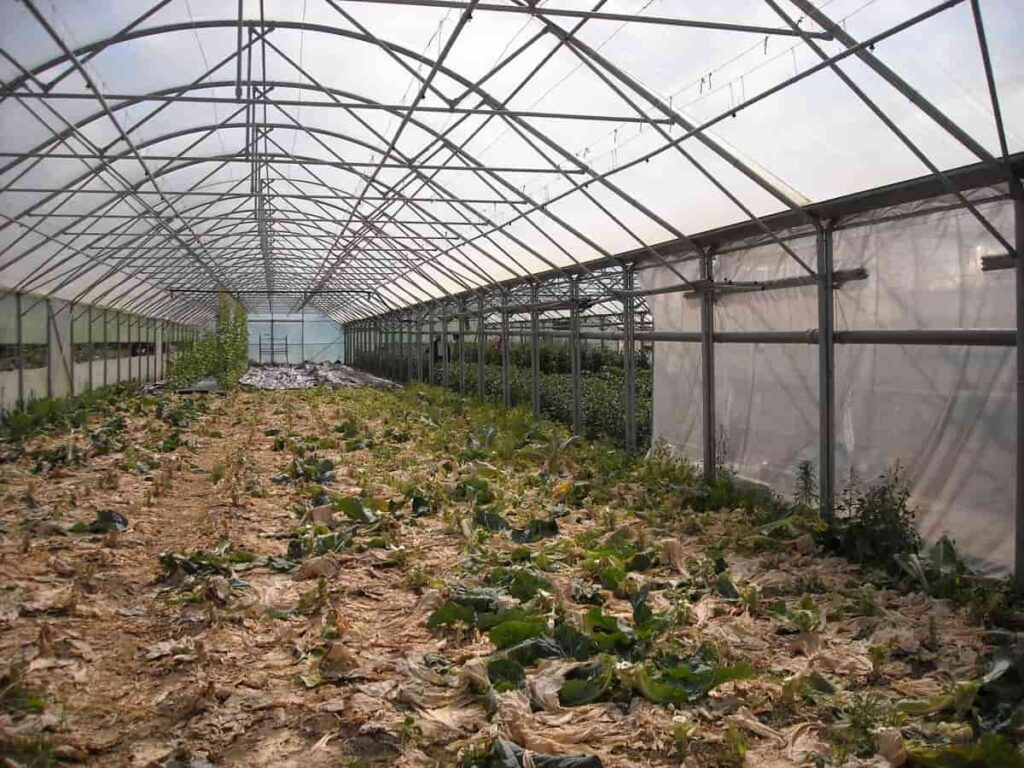
Instead of using land and water to grow crops, greenhouse farming uses artificial light and heat. In this article, we will explain the benefits of greenhouse farming in New Zealand and how you can start using it in your garden.
Greenhouse farming in New Zealand
What is greenhouse farming?
It is a type of agriculture that uses artificially heated structures to grow plants. The heating allows the crops to grow rapidly and produces a high yield. Greenhouse farming is popular in countries with cold climates because it allows crops to be grown outdoors during winter.
Greenhouse farming is most commonly used to produce fruits and vegetables and grow other plants. One advantage of greenhouse farming is that it allows farmers to control the temperature and humidity inside the greenhouse. This makes it possible to produce plants year-round.
Greenhouse vegetable production in New Zealand
New Zealand has many climates, soils, and elevations that can support vegetable production. New Zealand is divided into two main regions: the south is warmer and wetter, while the north is cooler and drier. This makes New Zealand a good location for greenhouse farming, as vegetables grown here can be enjoyed all year.
The climate in New Zealand also supports a wide variety of crops, including tomatoes, peppers, eggplant, cucumbers, squash, and peas. Greenhouses used for vegetable production are usually heated by either hot water or solar panels. Certain crops need more heat than others; for example, tomatoes need a lot of warmth to grow properly, so greenhouses with heating systems are ideal for them.
In case you missed it: Greenhouse Farming in Australia: How to Start, Cost, Crops, and Subsidy
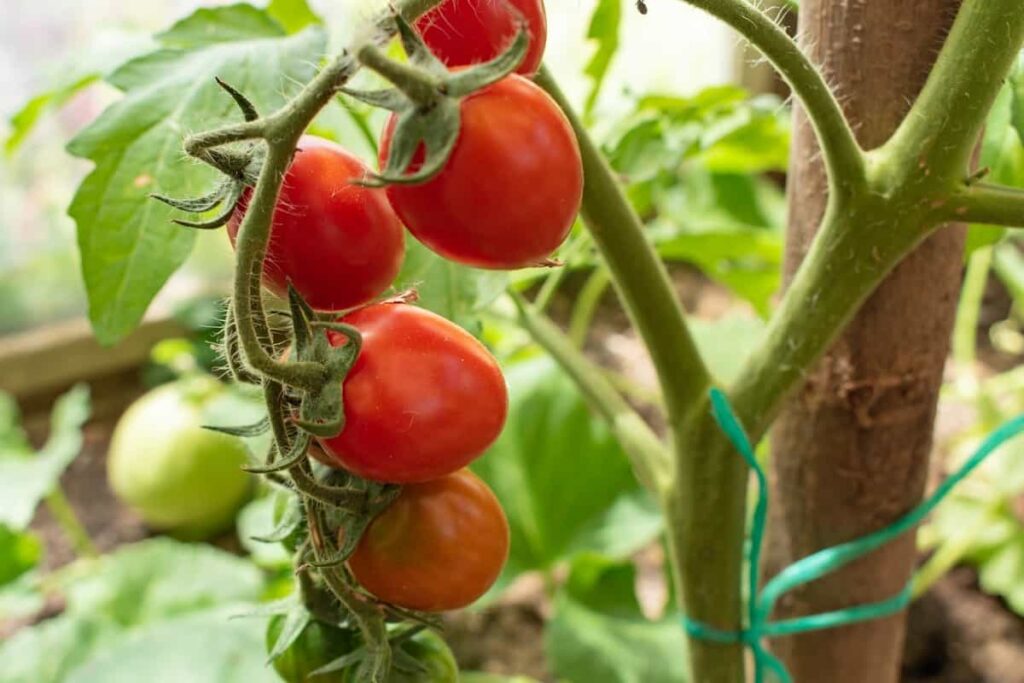
Benefits of greenhouse farming in New Zealand
- It is a type of agriculture that uses greenhouses to grow crops. A greenhouse is a large, enclosed structure made of glass or other materials to protect plants from the weather. Greenhouses allow farmers to grow crops year-round in different climates, which can be helpful for food production.
- The main benefits of greenhouse farming are that it allows farmers to produce crops in different climates, which can benefit food production. Additionally, greenhouse farming is environmentally friendly because it uses less land and water than traditional farming methods.
- Greenhouse farming uses less land and water than traditional farming methods and produces a smaller carbon footprint.
- Greenhouse farming can increase crop yields due to the controlled environment and high light levels.
- The controlled environment improves food quality, including higher nutritional values and reduced susceptibility to pests and diseases.
- Greenhouse farming allows consumers to choose produce that is environmentally friendly, sustainable, and of high quality.
How to start a greenhouse farm in New Zealand?
- Greenhouse farming may be the perfect solution if you love growing your vegetables and fruits but don’t have the space or time to do it on your own.
- You’ll need a few things to start greenhouse farming in New Zealand: a suitable location for the greenhouse, some planting materials, and a water system. You can find these things at most garden centers or home improvement stores.
- Once you’ve got everything you need, your greenhouse construction is pretty simple. All you’ll need is a frame made out of sturdy wood and aluminum foil or plastic sheeting. The greenhouse inside should be lined with polyethylene film so the plants can grow without getting hit by rain or snow.
- The best way to start growing your vegetables is to purchase seedlings from a reputable nursery or plant store and then transfer them into your new greenhouse. Once they’re established, you can begin harvesting your crops regularly.
Is greenhouse farming profitable in New Zealand?
Greenhouse farming is becoming increasingly popular in New Zealand, as it is a more sustainable way to produce crops. Greenhouse farming has many benefits, including using less land and water than traditional farming methods. Greenhouse farming in New Zealand is a method of agriculture that uses artificial heat and light to grow crops.
Greenhouse farming differs from traditional agriculture because it doesn’t rely on the sun or rain to grow crops. Instead, greenhouse farmers use artificial heat and light to grow crops. This is mainly done by using a system of hot and cold air ventilation to create a warm environment for the plants and a cool environment for the pests.
How does greenhouse farming work?
It is a type of agriculture where food is grown in glass or plastic enclosures that protect the plants from the elements. This type of agriculture has become increasingly popular in recent years because it is more efficient and produces a greater quantity of food than traditional farming methods. Greenhouse farming involves planting crops inside tall, transparent, climate-controlled structures.
In case you missed it: 16 Key Rules for Effective Greenhouse Farm Management: From Planning to Reducing Production Cost
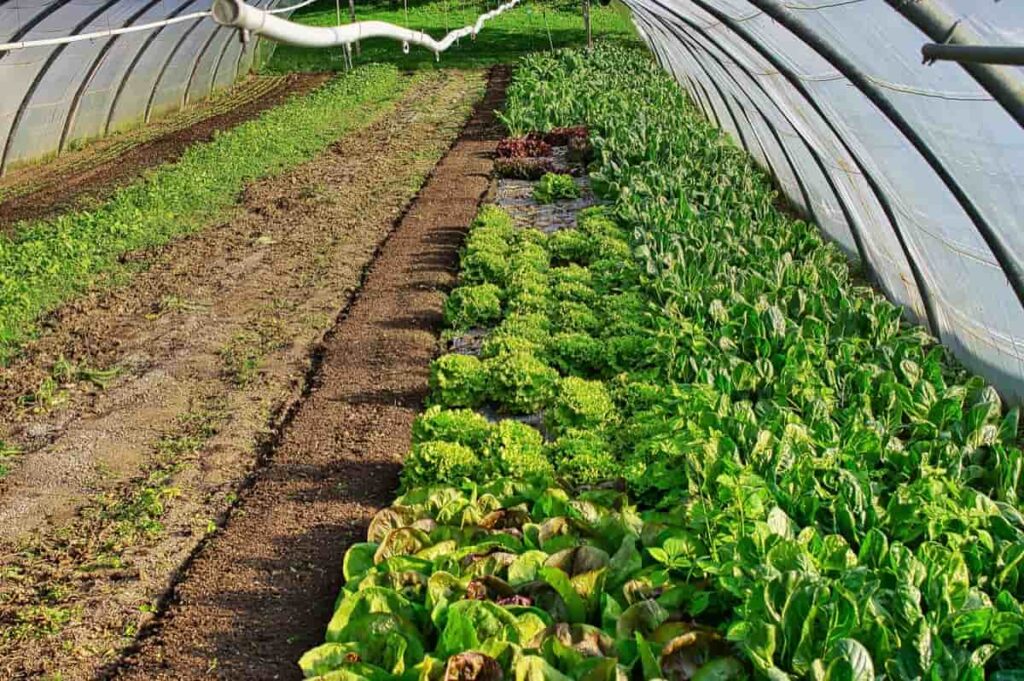
The structures are often made out of glass or plastic and are located near sources of fresh water or in areas with stable climates. Greenhouses also help to control pests and diseases by providing an isolated environment for plants. In addition, controlled growth allows scientists to study plant development and other aspects of horticulture without interference from adverse weather conditions.
Top states for greenhouse farming in New Zealand
- New Zealand is considered a leading country in greenhouse farming due to the many climatic and environmental conditions perfect for this type of agriculture. These conditions include high humidity levels, long growing seasons, and mild temperatures.
- Greenhouse production is centered around Auckland, the central North Island, Nelson, and Christchurch, with smaller units in other regions, particularly the Northland and the East Coast of the North Island.
- The country has several terrains perfect for greenhouse farming, including coastal areas, highlands, and rolling hills. This versatility makes New Zealand an ideal location for growing fruits and vegetables in controlled environments.
- Greenhouse farming in New Zealand is becoming increasingly popular due to the many benefits it offers farmers. These benefits include increased yields, reduced input costs, and less exposure to weather fluctuations.
Crops are grown under greenhouses in New Zealand
Some of the most common crops grown in greenhouses in New Zealand include tomatoes, cucumbers, peppers, strawberries, and lettuce. Greenhouse farming is becoming increasingly popular in New Zealand as it offers several benefits over traditional farming methods. A few plants will do well in a greenhouse in New Zealand: houseplants, succulents, Bromeliads, orchids, cacti, and ferns.
Tomatoes
New Zealand is one of the world’s leading tomato producers and has some of the best quality tomatoes. Several tomato varieties can be grown in New Zealand, including Roma, Beefsteak, San Marzano, and Breda types.
Pumpkins
Pumpkins are very versatile and can be grown in several ways. One popular way to grow pumpkins is by burying them on the ground up to their neck with their stems showing. This method allows farmers to control the amount of sunlight reaching the pumpkin, resulting in increased yields. Other ways to grow pumpkins include using raised beds or hoop houses.
Celery
Celery is another vegetable that can be successfully grown in greenhouses. The most common variety of celery grown in greenhouses is Italian, known for its long stalk and sweet-tasting leaves.
In case you missed it: How to Water Your Garden with Solar Power: For Home Gardening, Greenhouse, Polyhouse, and Outdoor
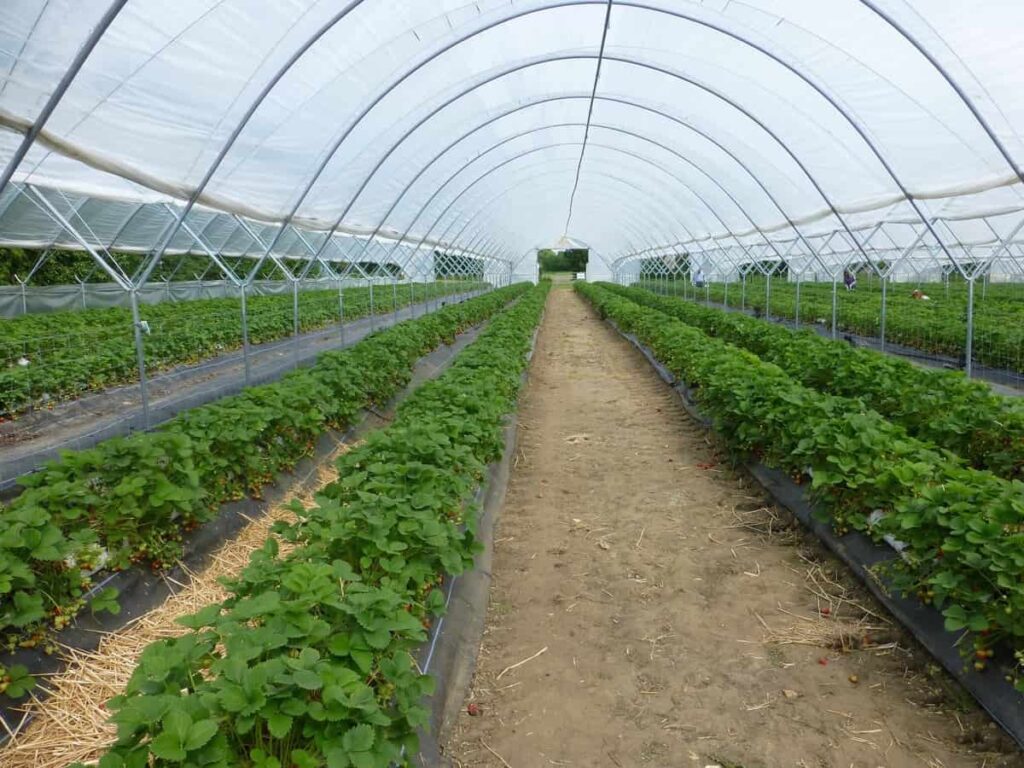
Different types of greenhouse farms in New Zealand?
There are several different types of greenhouse farms in New Zealand, each with advantages and disadvantages. Here are four of the most common:
Solar Greenhouses
The most common greenhouse farm in New Zealand is a solar greenhouse. Solar greenhouses use sunlight to produce crops, relying on the movement of air around the plants to distribute light and warmth evenly. Because solar greenhouses require relatively little maintenance, they’re popular among small-scale farmers who don’t have time or resources for more complex farming techniques.
Wind Greenhouses
Wind-powered greenhouses use the movement of air around the plants to distribute light and warmth evenly. This technology has several advantages over solar greenhouses; firstly, wind-powered greenhouses generate more crop yield than solar greenhouses because they can do better.
There are two types of greenhouse systems: open-air and closed-box. Open-air systems typically rely on natural ventilation to distribute light and air around the plants, while closed-box systems use artificial ventilation to control the environment and humidity levels.
- Open-air greenhouses are the most common type in New Zealand and offer many advantages over closed-box systems. They typically cost less to set up and maintain, require less annual maintenance, and produce more produce per hectare than closed-box greenhouses. However, open-air greenhouses can be susceptible to windblown rain and snow, damaging plants and being hot in summer.
- Closed-box greenhouses are becoming increasingly popular in New Zealand because they offer many of the same advantages as open-air greenhouses without some disadvantages. For example, closed-box greenhouses require less annual maintenance thanks to their Controlled Environment Systems (CES), which regulate temperature, humidity, light, and airflow. Closed-box greenhouses also tend to be cooler in summer than open-air greenhouses, which is beneficial for crops that prefer cooler climates.
Greenhouse farming in New Zealand is done using a variety of ways, including:
- Water culture: This method uses water to grow plants in hydroponic systems.
- Aeroponics: This method uses air to help distribute nutrients and water to plants.
- Vertical farm: A vertical farm is a type of greenhouse that grows crops on an industrial scale.
Cost to build a greenhouse farm in New Zealand
New Zealand is a great place to grow greenhouses. The country has mild weather all year, and the land is fertile. Many companies can help you build your greenhouse. Greenhouse farming in New Zealand can be very profitable, depending on your location and garden type. To get started, you’ll need to purchase a greenhouse kit and materials, secure a lease or purchase land in an appropriate climate. You will also need to factor in the cost of labour, which can be high in New Zealand. Overall, starting a greenhouse farm in New Zealand costs around NZ$50,000.
A step-by-step process for starting greenhouse farming in New Zealand
Determine your climate
You will need to determine the climate that you live in, as this will affect what type of greenhouse you should build and how much heating and cooling you will need. The three main types of climates in New Zealand are temperate, cool temperate, and subtropical/tropical.
In case you missed it: Top 22 Succulents to Grow at Home: in Pots, Indoors, Greenhouse, Problems, and Care
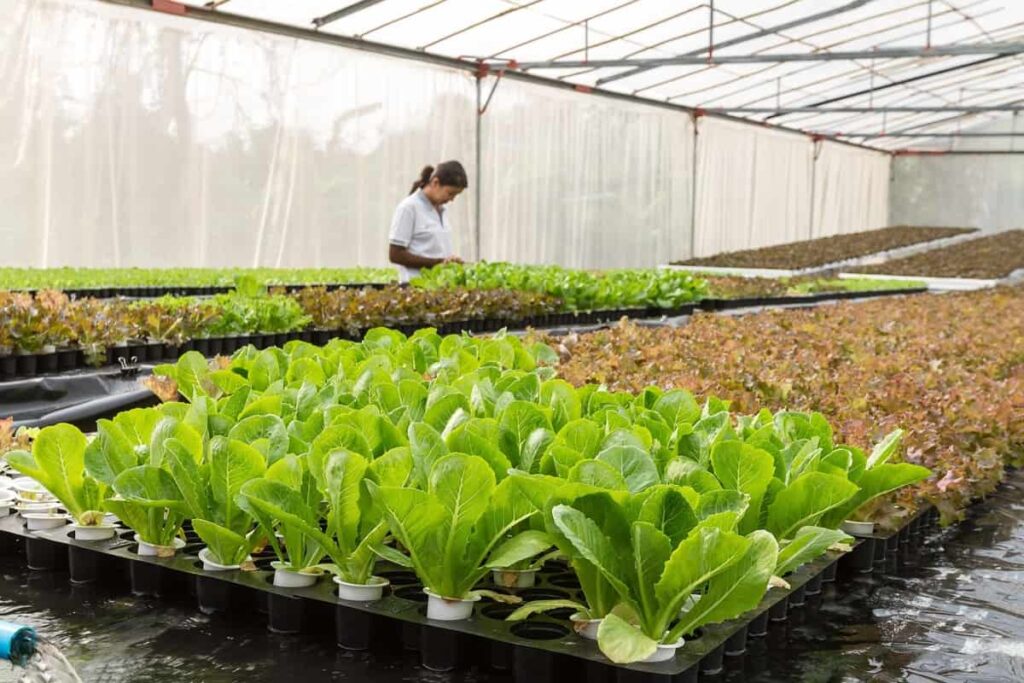
Choose a site
Once you have determined your climate, the next step is to choose a site for your greenhouse. We recommend selecting a sunny location with mild temperatures year-round. You don’t want your greenhouse to be too cold in winter or too hot in summer, so keep that in mind when looking for a site.
Build the structure
Construct the necessary structure for your greenhouse. This structure can be made of any material that can hold up under weather conditions (e.g., metal, plastic, wood). Ensure to include ventilation and lighting systems if you plan to grow plants indoors.
Set up the plants
Now, it’s time to set them up. Start by planting seeds inside the greenhouse frame and then gradually transplanting them outside once they grow big enough (typically around 6-8 weeks). Make sure to water the plants regularly while growing inside the greenhouse, so they don’t dehydrate or rot.
Largest greenhouse growers in New Zealand
The largest greenhouse growers in New Zealand are Cargill, Fonterra, and Horticulture New Zealand. These companies grow fruits and vegetables using greenhouses all over the country. This method is popular because it allows farmers to produce crops year-round in locations where other agricultural methods are not possible.
Greenhouse crop production in New Zealand
- Greenhouse production in New Zealand has been steadily increasing in recent years, with farmers able to cultivate a wider range of vegetables and fruits under controlled conditions.
- This agriculture has many benefits, including producing crops year-round, without harmful toxins and pests and improved crop yields.
- To begin greenhouse farming in New Zealand, you will need access to suitable land. Once you have acquired this property, there are a few things that you will need to take into account. This includes ensuring that the land is well drained, has good air circulation, and has adequate sunlight.
- Once you have prepared your land, the next step is to build your greenhouse. Greenhouses can be constructed using various materials, but they commonly use plastic or glass panels. The panels should be fitted together tightly to form an airtight seal.
- Once your greenhouse is ready, it is time to plant your crops. Several options are available, including lettuces, tomatoes, cucumbers, and strawberries. All of these plants require sunlight to grow properly, so make sure that your greenhouse has sufficient windows so that they can get enough light.
- As with any farming, success will depend on taking care of details from start to finish. However, by following these simple steps, you can successfully cultivate crops in a greenhouse environment in New Zealand.
Tips to start a greenhouse business in New Zealand
- Firstly, the climate here is very temperate, so you will need a large area of land to make it work.
- Secondly, the cost of inputs (such as irrigation and fertilizers) can be high, so make sure you have a solid business plan before starting.
- And finally, be prepared for long hours – greenhouses require a lot of attention.
Greenhouse subsidy in New Zealand
The government of New Zealand offers several incentives for greenhouse farmers, including subsidies for energy usage and research and development funding. In addition, the government provides grants for construction and equipment purchases and supports marketing efforts. This combination of government support and private investment is helping greenhouse farming become an increasingly viable option for farmers across the country.
In case you missed it: Growing Broccoli in Greenhouse – Planting, Farming
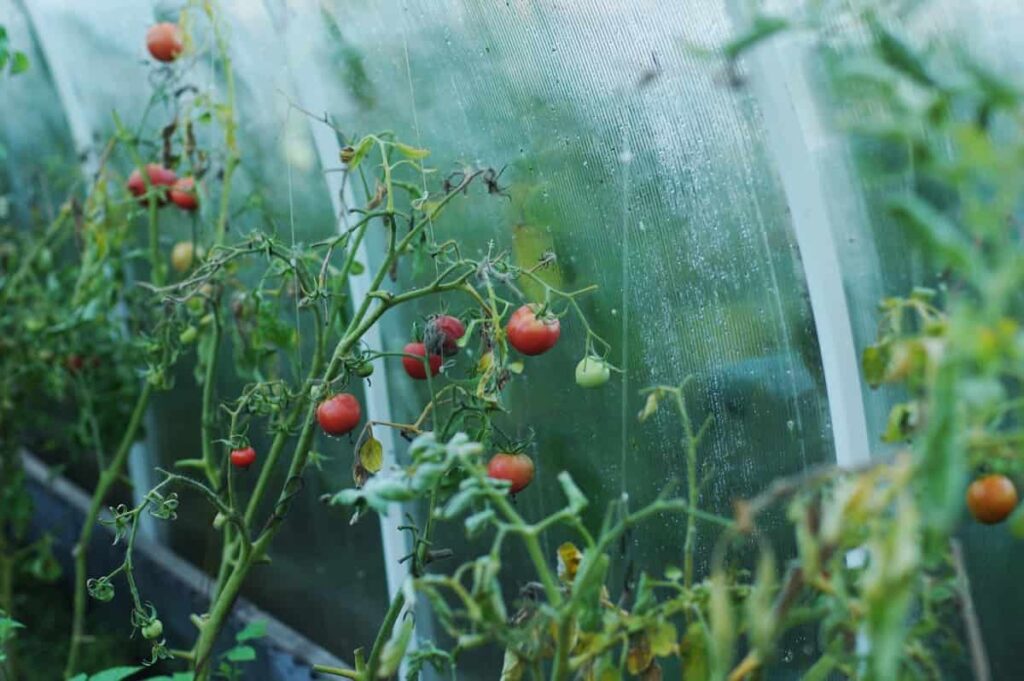
Challenges of greenhouse farming in New Zealand
- The biggest challenge faced by greenhouse farmers is weather variability. The weather can be unpredictable in New Zealand, so farmers must be prepared for both good and bad seasons. However, the high yields produced by greenhouse farms make them well worth the investment.
- Growing crops in greenhouses are challenging because New Zealand is one of the world’s most temperate countries. The average annual temperature in New Zealand is around 23°C, which is too cold for some plants. Greenhouses also don’t get enough sunlight, so some crops need to be grown in combination with other types of farming to get the right amount of light.
- Another challenge with greenhouse farming in New Zealand is the country’s arid climate. Many plants require irrigation, but it isn’t easy to deliver water to a greenhouse from far away.
Conclusion
Greenhouse production in New Zealand takes advantage of the country’s temperate climate and plentiful sunlight. The majority of greenhouse crops are produced indoors under controlled conditions, making it an ideal option for farmers who want to produce food without having to deal with the risks associated with weather extremes. New Zealand’s most significant greenhouse industry includes a nursery, flower, and salad vegetable production. Tomatoes and Capsicums have the largest economic output and have recently received the most investment.
- How to Make Houseplants Bushy: Effective Tips and Ideas
- Innovative Strategies for Boosting Coconut Pollination and Yield
- Pollination Strategies for Maximum Pumpkin Yield
- The Complete Guide to Chicken Fattening: Strategies for Maximum Growth
- Natural Solutions for Tulip Problems: 100% Effective Remedies for Leaf and Bulb-Related Issues
- Revolutionizing Citrus Preservation: Towards a Healthier, Greener Future
- Natural Solutions for Peony Leaf and Flower Problems: 100% Effective Remedies
- Maximizing Profits with Avocado Contract Farming in India: A Comprehensive Guide
- Natural Solutions for Hydrangea Problems: 100% Effective Remedies for Leaf and Flowers
- The Ultimate Guide to Choosing the Perfect Foliage Friend: Bringing Life Indoors
- From Sunlight to Sustainability: 15 Ways to Use Solar Technology in Agriculture
- The Ultimate Guide to Dong Tao Chicken: Exploring from History to Raising
- The Eco-Friendly Makeover: How to Convert Your Unused Swimming Pool into a Fish Pond
- Mastering the Art of Delaware Chicken Farming: Essentials for Healthy Backyard Flocks
- 20 Best Homemade Fertilizers for Money Plant: DIY Recipes and Application Methods
- How to Craft a Comprehensive Free-Range Chicken Farming Business Plan
- Brighten Your Flock: Raising Easter Egger Chickens for Beauty and Bounty
- How to Optimize Your Poultry Egg Farm Business Plan with These Strategies
- Subsidy for Spirulina Cultivation: How Indian Government Schemes Encouraging Spirulina Farmers
- Ultimate Guide to Raising Dominique Chickens: Breeding, Feeding, Egg-Production, and Care
- Mastering the Art of Raising Jersey Giant Chickens: Care, Feeding, and More
- Ultimate Guide to Raising Legbar Chickens: Breeding, Farming Practices, Diet, Egg-Production
- How to Raise Welsummer Chickens: A Comprehensive Guide for Beginners
- How to Protect Indoor Plants in Winter: A Comprehensive Guide
- Ultimate Guide to Grow Bag Gardening: Tips, Tricks, and Planting Ideas for Urban Gardeners
- Guide to Lotus Cultivation: How to Propagate, Plant, Grow, Care, Cost, and Profit
- Agriculture Drone Subsidy Scheme: Government Kisan Subsidy, License, and How to Apply Online
- Ultimate Guide to Raising Araucana Chickens: Breed Profile, Farming Economics, Diet, and Care
- Bringing Hydroponics to Classroom: Importance, Benefits of Learning for School Students
- Ultimate Guide to Raising Polish Chickens: Breed Profile, Farming Economics, Diet, and Care
- Ultimate Guide to Raising Australorp Chickens: Profile, Farming Economics, Egg Production, Diet, and Care
- Silkie Chicken Farming: Raising Practices, Varieties, Egg Production, Diet, and Care
- Sussex Chicken Farming: Raising Practices, Varieties, Egg Production, Diet and Care
- Homemade Feed Formulations for Livestock: Discover Cost-effective Starter to Finisher Feed Recipes
- 20 Best Pig Weight Gain Supplements: Top Swine Weight Gain Formulas
- Ultimate Guide to Elderberry Farming: Propagation, Planting, Yield, Cost, and Profit